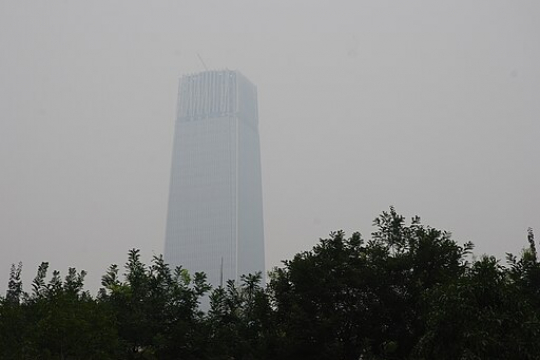The cement industry in China is a great air polluter and its production accounts for 60% of global production. Research funded by EfD will contribute to the policy discussion about the optimal tax for this industry.
China has stringent emission standards as well as and an emission tax for SO2 (sulfur dioxide) and NOx (nitrogen oxide) as environmental regulation for the cement industry. Firms can invest in abatement equipment to reduce pollution, which is an engineering or technology cost, but this cost does not cover the whole cost of pollution for the environment.
When policymakers want to control pollution, they tend to consider the engineering costs and costs of alternative energy. However, they are not as inclined to consider the implicit costs, such as the cost for firms to reduce production in response to an emission tax. Local policymakers are concerned about what tax reduces firm pollution without hampering economic development. Then, the question is: What is the optimal tax that achieves the maximum social benefits by reducing pollution given the actual abatement costs?
EfD China researchers Fan Xia and Yuanyuan Yi, with researcher Ruozi Song, aim to support policymakers to define a model that allows them to identify the optimal tax that reduces pollution while maximizing economic welfare. “Policy implication is the main reason why we are interested in this research, and also explain how policy makers can incorporate firm heterogeneity when designing a policy”, says Fan.
Firm heterogeneity challenges the definition of optimal tax
Ideally, the policymakers could define one uniform tax level for all firms, but there are differences among firms regarding size, market power, abatement cost, as well as the benefit of pollution abatement depending on their locations. That is called heterogeneity among firms. Current literature does not consider this firm heterogeneity when defining a tax.
In their study, funded by EfD, Fan Xia (also WinEED member) and colleagues want to calculate the benefits and the costs of tax policy while considering firm heterogeneity. The preliminary name of the study is: Pollution Taxes as a Second-Best: Accounting for Multidimensional Firm Heterogeneity in Environmental Regulations.
Their analysis consists of calculating the firm's response to different environmental taxes in emission and production, and the health benefits of reducing air pollution locally. These health benefits depend on local demographics and climate conditions. To perform this analysis, they will postulate a theoretical and an empirical model that allows them to infer the abatement costs based on different firm behaviors under different tax levels. After that, they will incorporate local benefits of reducing pollution, calculate the economic welfare for consumers, producers, and the government, and find the optimal tax level. They will also compare the welfare consequences at alternative tax levels.
Expect to find an optimal policy for each province
Using data from official statistics and the cement industry association from 2013 to 2018, Fan Xia and her colleagues expect to find the optimal uniform tax level for the cement industry for each province in China.
They already have some preliminary results. For example, they have calculated the local marginal benefits of pollution reduction. They also have calculated the cost function for each cement firm that includes the abatement cost of reducing emission intensity and adjusting production.
By: Manuela Fonseca (Comm officer for EfD Colombia and WinEED).
